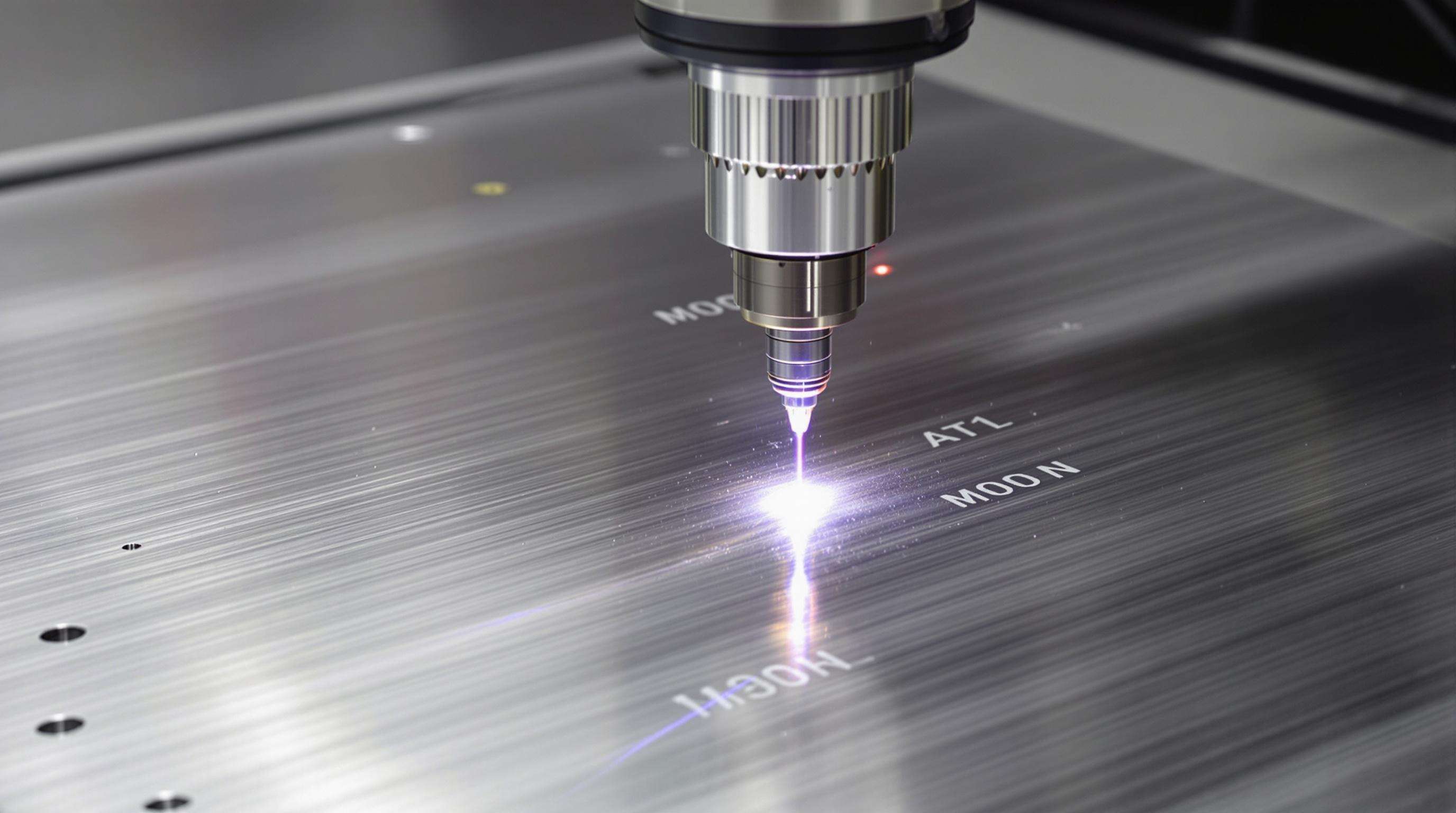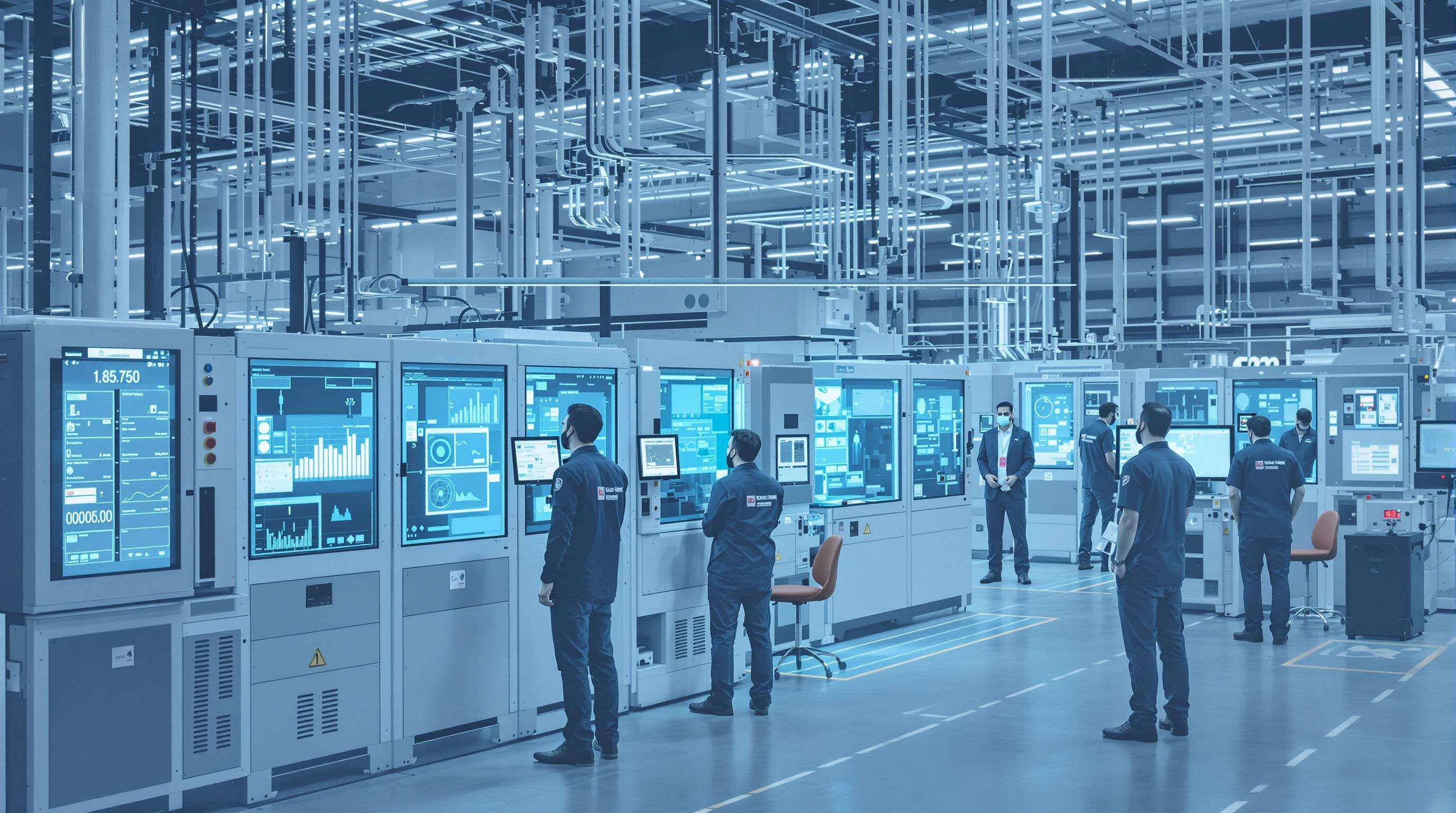How Laser Marking Machine for Stainless Steel Technology Enhances Stainless Steel Marking

The fiber laser tech has really boosted what we can do when marking stainless steel in industrial settings. The system works with a 1.064 micrometer wavelength beam that actually bonds well with metal surfaces. This creates lasting marks by controlling oxidation processes without messing up the base material properties. According to recent research from the Laser Processing Institute published last year, these fiber lasers mark stainless steel about 30 percent quicker than traditional CO2 systems. Plus, they leave behind heat affected zones measuring under 5 micrometers wide, which means minimal damage to surrounding areas during the marking process.
Understanding Material Compatibility Between Lasers and Stainless Steel
The crystalline structure of stainless steel requires precise energy delivery to avoid surface deformation. Fiber lasers excel due to their pulsed operation mode, delivering 10–100 ns bursts that vaporize surface layers at 0.01–0.1 mm depths. This creates high-contrast marks meeting ISO/ASTM permanency standards while preserving corrosion resistance.
Advantages of Fiber Laser Systems in Metal Processing Environments
Industrial-grade fiber laser machines offer three key benefits:
- 50,000-hour operational lifespan with <0.5% power degradation (Ponemon, 2023)
- 6000 mm/s marking speeds for high-volume production
- Zero consumables, unlike ink-based methods
These advantages reduce total ownership costs by 18–22% over five years in automotive manufacturing.
Comparison: Laser Marking vs. Traditional Methods on Stainless Steel
Unlike mechanical engraving or chemical etching, fiber lasers use non-contact thermal modification, eliminating tool wear and achieving ±0.005 mm positional accuracy for aerospace components. The table below highlights key performance differences:
| Metric | Laser Marking | Engraving | Etching |
|---|---|---|---|
| Cycle Time (100mm²) | 8s | 45s | 120s |
| Depth Consistency | ±0.2µm | ±15µm | N/A |
| Post-Processing | None | Deburring | Neutralization |
This precision supports direct part marking (DPM) compliance in medical devices while maintaining sterile surfaces.
Precision, Permanence, and Performance of Laser Marks on Metal
Achieving Micron-Level Accuracy with Laser Marking Machines for Stainless Steel
Today's fiber laser systems can create spots as tiny as 10 micrometers according to HeatSign research from last year, which makes them really important for things like medical implants where precision is everything, and those tricky aerospace fastener components too. The closed loop positioning tech keeps circularity errors under 1 micrometer actually, that's about 40 times better than what we see with regular engraving methods. And let's not forget about galvanometer scanners either. These babies deliver consistent results within plus or minus 5 microns while running at crazy speeds over 7,000 mm per second. No more worrying about tool drift during operation, which saves both time and money in production environments.
Durability of Laser-Engraved Markings Under Extreme Industrial Conditions
Surface treatments created through laser fusion can handle over 500 hours in salt spray tests according to ASTM B117 standards, and they remain stable even when temperatures reach as high as 1,100 degrees Celsius. Recent research published in 2023 showed something pretty impressive about these laser marks on stainless steel surfaces. After going through 1,000 thermal cycles ranging from minus 40 degrees all the way up to 250 degrees Celsius, the markings still maintained around 98.7% of their original contrast. That's way better than what we see with traditional inkjet methods, which tend to break down after just about 50 cycles give or take. Another big advantage comes from the fact that this is a non-contact process. Components subjected to intense vibrations (think anything above 15G forces) don't develop those pesky micro cracks that often plague other marking techniques.
Wear Resistance and Surface Integrity After Laser Processing
Laser-induced surface hardening increases stainless steel's Vickers hardness by 8.37x (HeatSign, 2023) through rapid localized heating. This results in wear-resistant zones where identifiers remain legible after:
- 10,000+ abrasion cycles (ASTM D4060)
- Continuous exposure to IPA, acetone, and industrial cleaners
-
High-pressure water jetting at 30,000 PSI
Post-marking surface roughness measures Ra ≤0.2 µm, ensuring resistance to particulate adhesion and maintaining corrosion resistance comparable to unmarked areas.
Real-World Applications in Aerospace, Medical, and Automotive Industries
Case study: High-speed serial number marking in aerospace components
Aerospace manufacturers use fiber laser systems to imprint permanent identification on turbine blades and structural parts. These markings withstand 2,000+ thermal cycles while remaining readable—meeting FAA traceability requirements. The 2025 Self-Healing Materials Report notes that laser-etched identifiers on advanced alloys improve component traceability by 73% over mechanical engraving.
Laser marking for medical devices: Compliance, precision, and traceability
Surgical instrument manufacturers achieve 10µm marking accuracy with fiber lasers, complying with ISO 13485 standards. Marks remain legible through 500+ autoclave sterilization cycles—essential for FDA-regulated devices.
Custom identification solutions in automotive and tool manufacturing
Automotive suppliers apply laser-marked QR codes on stainless steel engine components, enabling real-time quality tracking during CNC machining. This reduces part identification errors by 89% in high-volume production compared to traditional stamping.
Integration with Smart Manufacturing and Industry 4.0 Systems

Connecting Laser Marking Machine for Stainless Steel to Digital Traceability Networks
Today's laser marking systems work really well with smart manufacturing setups through their internet of things connections. Once hooked up to those MES and ERP systems, factories can track parts as they move through the whole supply chain in real time. The Ponemon Institute did some research back in 2023 showing that these connected systems cut down on tracking mistakes by around two thirds when compared to old fashioned manual methods. This matters a lot because it helps companies stay compliant with those ISO standards and makes sure everything gets properly labeled for things like aircraft parts numbers and medical equipment identification codes.
Automated Workflows and Real-Time Data Logging in Industrial Settings
Modern fiber laser systems come equipped with AI that handles job routing automatically. These systems use closed loop feedback mechanisms to tweak parameters like beam intensity ranging from 20 watts to 50 watts, along with pulse frequencies between 20 kilohertz and 80 kilohertz. All this happens thanks to sensors that detect changes in materials as they pass through the system. According to ABI Research findings released last year, when manufacturers combine laser marking technology with predictive maintenance software, they see a reduction of nearly 19% in equipment changeover times. What's really impressive is how these systems create real time quality records which get sent straight to cloud platforms. This allows engineers to track down what caused defects in just under a second flat something absolutely essential for car part makers who rely on just-in-time manufacturing processes where delays can be costly.
FAQ
What is the main advantage of using fiber lasers for marking stainless steel?
Fiber lasers offer non-contact marking, resulting in precise and permanent marks without causing damage to the material. The ability to create high-contrast marks while maintaining the integrity of stainless steel surfaces is a primary benefit.
How do fiber lasers compare to traditional CO2 systems in marking efficiency?
Fiber lasers mark stainless steel about 30% faster than CO2 systems, with minimal heat affected zones. They allow for faster processing and superior accuracy in industrial settings.
Are fiber laser markings durable under extreme conditions?
Yes, fiber laser markings have been proven to withstand extreme conditions such as high temperatures and salt spray, maintaining their contrast and legibility even after extensive thermal cycling.

